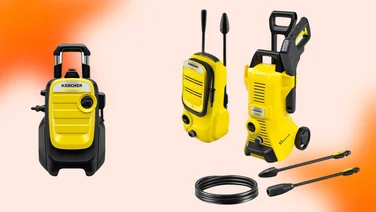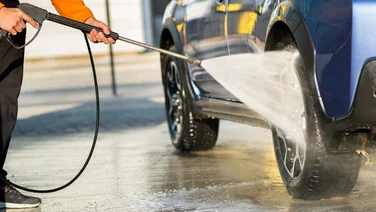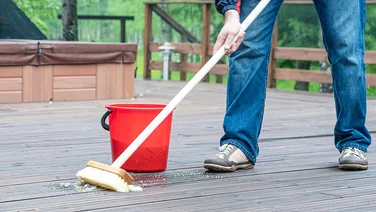To help us provide you with free impartial advice, we may earn a commission if you buy through links on our site. Learn more

When it comes to outdoor cleaning, nothing can quite match the efficacy and satisfaction of using a pressure washer. Blasting away dirt, debris and stubborn grime from your decking, patio, car and other outdoor surfaces is usually quick, easy and one of the more fun household tasks we regularly take on, thanks to the powerful jet stream loosed by the average pressure washer. However, like any machine, pressure washers can have their performance issues.
A loss of pressure can very quickly take wind out of your sails when cleaning, as it will reduce your machine’s cleaning power and make it so that you can’t tackle more difficult jobs. The reason behind a fault like this can be as simple as not turning your tap up high enough and as complex and unfortunate as a faulty pump. To diagnose and hopefully solve your pressure washer problem, check out our list of issues and solutions below, which also features expert advice from Paul Hicks, product and marketing manager at STIHL GB.
Why is your pressure washer losing pressure?
Looking at the variety of causes for pressure washer problems, Paul notes that “when it comes to pressure washing, there are several reasons why your machine may be losing pressure, or the pressure is fluctuating.” Luckily, he adds that “there are simple solutions for most of these issues.” So, with that said, let’s get to it.
1. Inadequate water supply
When it comes to problems with tools like pressure washers, it’s best to rule out the simplest and most obvious causes first, before taking more laborious measures like disassembling your machine or replacing potentially faulty parts.

So, before you take a look at anything else, Paul reminds us that it can pay dividends to check that water is flowing unimpeded to your pressure washer from its source: “One reason why the pressure may be dropping is that there simply isn’t enough water – check that your water supply is adequate, and make sure the water tap is fully opened.”
2. Worn nozzle
Aside from water supply issues, the most common cause of lost pressure is an old or worn-out nozzle. “If your nozzle is old and worn, this could also cause you problems when you come to use your pressure washer,” Paul notes, suggesting that if your nozzle is visibly on its last legs, then it is best to replace it with a fresh part. When buying a new nozzle, it is a good idea to double and triple check that it is the correct size, type and model for your machine. Pressure washers use a lot of different nozzles and exist in a wide number of subtle variations, so it can be very easy to get the wrong part if you’re not careful.
3. Blocked nozzle
Naturally enough, nozzle-related issues are going to be some of the more common concerns when it comes to misperforming pressure washers. Even if your nozzle isn’t old and worn, it may still be suffering from a blockage, which could reduce your washer’s pressure and flowrate. Paul says: It could also be that the nozzle on your tool is blocked. To remedy this issue, clean the clogged nozzle with a nozzle needle.”
4. Water inlet blockage
Your pressure washer’s water inlet and its filter is an important part when it comes to maintaining pressure. This is where water will actually enter your machine, so any blockage will necessarily hamper its output.

As well as checking it when pressure is low, Paul recommends periodic maintenance for this piece of your washer: “You should make sure to regularly check the water inlet screen in your pressure washer for any build-up of dirt. Clean the screen under running water until all dirt is removed, place it back into the water connection, screw your nozzle back on, and you’ll be ready to go.” How you go about removing and cleaning the screen and inlet will depend on the make and model of your pressure washer, so you may want to refer to the manufacturer’s instructions before you start this step.
5. Leaking seals or connections
If none of the above steps have solved your pressure issue and you’re finding the problem hard to diagnose, then it may prove useful to give your machine a thorough check over for leaks. If you find water or air leaking from any part of your pressure washer, try refixing or replacing any loose seals or connections where possible and patching any small holes or tears. If the problem persists or is beyond fixing at home, Paul says, “if the pump, hose or spray attachment on your machine is leaking or otherwise faulty, head to your closest dealer or repair shop, where they will inspect the machine and offer expert advice.”
6. Faulty pump
Loss of pressure is a common sign that your washer’s pump has started giving up the ghost. Other symptoms of potential pump failure include leaking water, excess noise when in use and pulsing or cycling pressure. If you suspect your pump has failed in this manner, it’s best to take your pressure washer to be looked at by a professional or, in the worst case scenario, to start thinking about picking up a new model.






